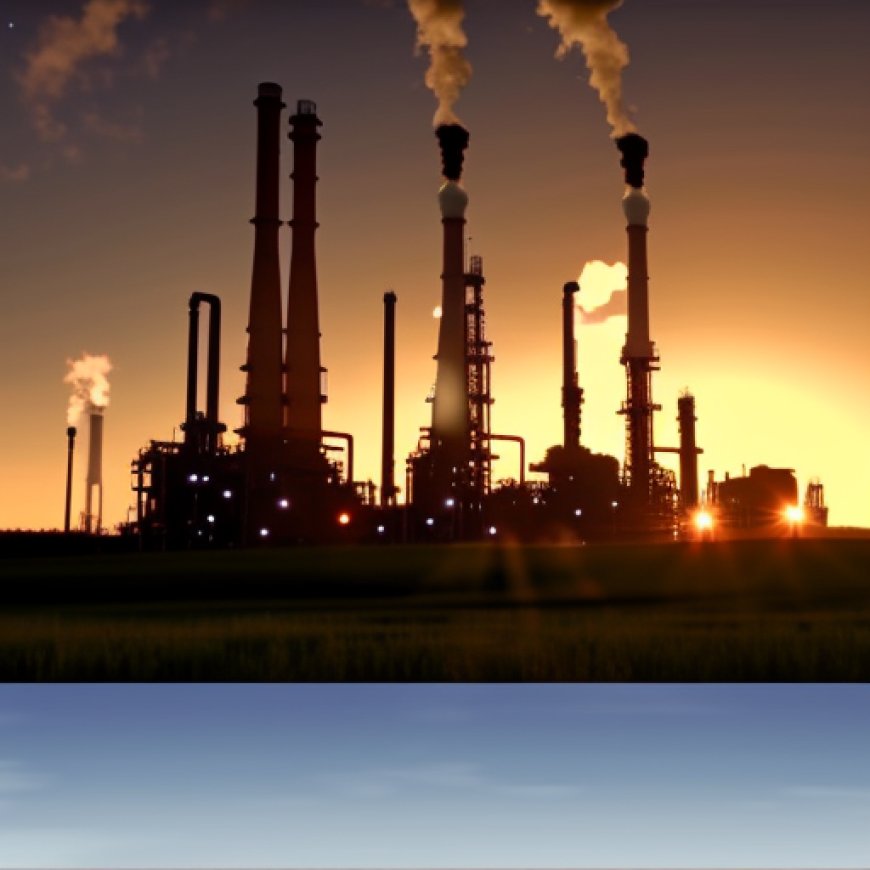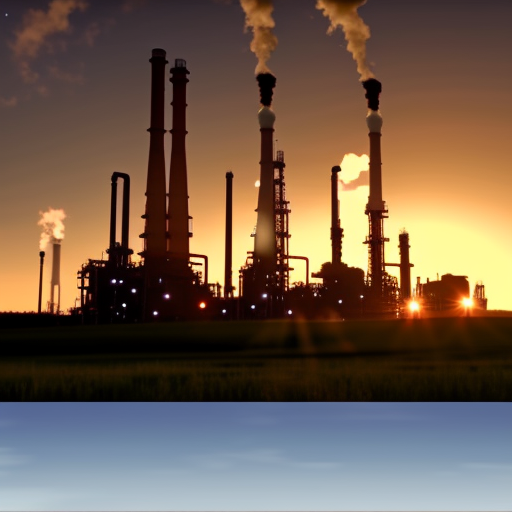Coffeyville Resources Refining & Marketing Will Pay More Than $23 Million to Address Clean Air Act Violations and Offset Environmental Harm Related to Its Kansas Refinery
Coffeyville Resources Refining & Marketing Will Pay More Than $23 ... Department of Justice


The Justice Department and U.S. Environmental Protection Agency (EPA) Announce Settlement with Coffeyville Resources Refining & Marketing LLC for Clean Air Act Violations

The Justice Department and U.S. Environmental Protection Agency (EPA) have reached a settlement with Coffeyville Resources Refining & Marketing LLC and its affiliated companies (CRRM) for violations of the Clean Air Act and a previous consent decree related to the operation of its petroleum refinery in Coffeyville, Kansas. These violations resulted in illegal emissions of various pollutants, including over 2,300 excess tons of sulfur dioxide (SO2) from the refinery’s flares from 2015 to 2017.
Violations and Settlement
The United States and the State of Kansas allege that CRRM violated numerous provisions of a 2012 consent decree and the Clean Air Act. Under the settlement, CRRM will spend at least $1 million on a project to benefit the public and environment of Kansas and implement measures costing up to $9 million to prevent future violations and address the environmental harm caused by their unlawful conduct. The company will also pay more than $13 million in penalties to the United States and Kansas.
Emphasis on Sustainable Development Goals
This settlement aligns with several Sustainable Development Goals (SDGs), including:
- SDG 3: Good Health and Well-being – The emissions reductions achieved under this settlement will result in healthier air for a community disproportionately affected by air pollution, improving the well-being of its residents.
- SDG 7: Affordable and Clean Energy – The actions taken by CRRM, along with the state partners in Kansas, will reduce greenhouse gas emissions and harmful air pollution, contributing to the promotion of clean energy sources.
- SDG 11: Sustainable Cities and Communities – The investment of $1 million in an environmental project approved by the state of Kansas will directly benefit the citizens of the state, promoting sustainable development within the community.
Statements from Officials
“This settlement demonstrates that the United States will take decisive action to address Clean Air Act violations, to enforce the terms of consent decrees, and to promote environmental justice,” said Assistant Attorney General Todd Kim of the Justice Department’s Environment and Natural Resources Division (ENRD).
“The settlement with Coffeyville delivers on the promise of EPA’s new climate enforcement strategy by reducing greenhouse gas emissions in amounts equal to taking 10,000 cars off the road every year,” said Assistant Administrator David M. Uhlmann for EPA’s Office of Enforcement and Compliance Assurance.
“We are committed to protecting people and families in the communities where they live,” said EPA Region 7 Administrator Meg McCollister. “In addition to the emission controls provided in the settlement, this order requires CRRM to invest $1 million in an environmental project to be approved by the state of Kansas, which will directly benefit the citizens of the state.”
Environmental Impact
Since the investigation began in 2016, CRRM’s efforts to come into compliance with Clean Air Act requirements have already eliminated more than 39,000 tons per year of carbon dioxide (CO2) emissions from excessive flaring of waste gas. Additionally, the flare gas recovery system required by the consent decree will further reduce yearly emissions of greenhouse gases, sulfur dioxide, and nitrogen oxide, contributing to the reduction of smog and other harmful air pollutants.
Legal Proceedings
In 2020, the United States and Kansas sought more than $6.8 million in stipulated penalties from CRRM due to alleged violations of the 2012 consent decree. The U.S. District Court for the District of Kansas held CRRM liable for the stipulated penalties, and the company appealed the decision. Furthermore, additional Clean Air Act violations at the refinery in 2020 resulted in excess emissions of sulfur dioxide.
The consent decree filed today resolves the stipulated penalties demand and violations identified in the complaint. CRRM is required to pay penalties, undertake measures to facilitate future compliance with the Clean Air Act, and build a flare gas recovery system.
Investigation and Prosecution
EPA Region 7, EPA’s Office of Enforcement and Compliance Assurance, and the Kansas Department of Health and Environment conducted the investigation. Attorneys from ENRD’s Environmental Enforcement Section and the State of Kansas prosecuted the case.
The consent decree is subject to a 30-day public comment period and final court approval.
Source: Justice Department
SDGs, Targets, and Indicators Analysis
1. Which SDGs are addressed or connected to the issues highlighted in the article?
- SDG 3: Good Health and Well-being
- SDG 7: Affordable and Clean Energy
- SDG 11: Sustainable Cities and Communities
- SDG 13: Climate Action
- SDG 15: Life on Land
The article discusses violations of the Clean Air Act and the harmful emissions from a petroleum refinery in Coffeyville, Kansas. These issues are directly connected to SDG 3, as the emissions can harm breathing and affect the health and well-being of the community. The reduction of greenhouse gas emissions and harmful air pollution also aligns with SDG 7, which focuses on affordable and clean energy. Additionally, the article mentions the impact on the environment, including acid rain and tree and plant damage, which relates to SDG 15. The efforts to come into compliance with Clean Air Act requirements and reduce emissions also contribute to SDG 13, which aims to take urgent action to combat climate change. Lastly, the focus on the community affected by air pollution aligns with SDG 11, which aims to make cities and human settlements inclusive, safe, resilient, and sustainable.
2. What specific targets under those SDGs can be identified based on the article’s content?
- Target 3.9: By 2030, substantially reduce the number of deaths and illnesses from hazardous chemicals and air, water, and soil pollution and contamination.
- Target 7.2: By 2030, increase substantially the share of renewable energy in the global energy mix.
- Target 11.6: By 2030, reduce the adverse per capita environmental impact of cities, including by paying special attention to air quality and municipal and other waste management.
- Target 13.2: Integrate climate change measures into national policies, strategies, and planning.
- Target 15.1: By 2020, ensure the conservation, restoration, and sustainable use of terrestrial and inland freshwater ecosystems and their services.
Based on the article’s content, the specific targets that can be identified are as follows:
– Target 3.9: The reduction of harmful emissions and pollutants aims to reduce illnesses and deaths caused by air pollution.
– Target 7.2: The implementation of measures to prevent future violations and the reduction of greenhouse gas emissions contribute to increasing the share of renewable energy.
– Target 11.6: The focus on reducing air pollution and addressing environmental harm in cities aligns with this target.
– Target 13.2: The efforts to reduce emissions and combat climate change through compliance with Clean Air Act requirements contribute to integrating climate change measures into national policies.
– Target 15.1: The actions taken to prevent environmental harm and reduce emissions aim to ensure the sustainable use of terrestrial ecosystems.
3. Are there any indicators mentioned or implied in the article that can be used to measure progress towards the identified targets?
Yes, there are indicators mentioned or implied in the article that can be used to measure progress towards the identified targets:
– Indicator for Target 3.9: Number of excess tons of sulfur dioxide (SO2) emissions from the refinery’s flares.
– Indicator for Target 7.2: Reduction in greenhouse gas emissions, specifically carbon dioxide (CO2) emissions from excessive flaring of waste gas.
– Indicator for Target 11.6: Reduction in emissions of pollutants, such as sulfur dioxide (SO2) and nitrogen oxide (NOx), that contribute to air pollution.
– Indicator for Target 13.2: Reduction in greenhouse gas emissions, specifically carbon dioxide (CO2) emissions from excessive flaring of waste gas.
– Indicator for Target 15.1: Reduction in emissions of pollutants, such as sulfur dioxide (SO2) and nitrogen oxide (NOx), that contribute to environmental harm.
4. Table: SDGs, Targets, and Indicators
| SDGs | Targets | Indicators |
|---|---|---|
| SDG 3: Good Health and Well-being | Target 3.9: By 2030, substantially reduce the number of deaths and illnesses from hazardous chemicals and air, water, and soil pollution and contamination. | Number of excess tons of sulfur dioxide (SO2) emissions from the refinery’s flares. |
| SDG 7: Affordable and Clean Energy | Target 7.2: By 2030, increase substantially the share of renewable energy in the global energy mix. | Reduction in greenhouse gas emissions, specifically carbon dioxide (CO2) emissions from excessive flaring of waste gas. |
| SDG 11: Sustainable Cities and Communities | Target 11.6: By 2030, reduce the adverse per capita environmental impact of cities, including by paying special attention to air quality and municipal and other waste management. | Reduction in emissions of pollutants, such as sulfur dioxide (SO2) and nitrogen oxide (NOx), that contribute to air pollution. |
| SDG 13: Climate Action | Target 13.2: Integrate climate change measures into national policies, strategies, and planning. | Reduction in greenhouse gas emissions, specifically carbon dioxide (CO2) emissions from excessive flaring of waste gas. |
| SDG 15: Life on Land | Target 15.1: By 2020, ensure the conservation, restoration, and sustainable use of terrestrial and inland freshwater ecosystems and their services. | Reduction in emissions of pollutants, such as sulfur dioxide (SO2) and nitrogen oxide (NOx), that contribute to environmental harm. |
Behold! This splendid article springs forth from the wellspring of knowledge, shaped by a wondrous proprietary AI technology that delved into a vast ocean of data, illuminating the path towards the Sustainable Development Goals. Remember that all rights are reserved by SDG Investors LLC, empowering us to champion progress together.
Source: justice.gov

Join us, as fellow seekers of change, on a transformative journey at https://sdgtalks.ai/welcome, where you can become a member and actively contribute to shaping a brighter future.







